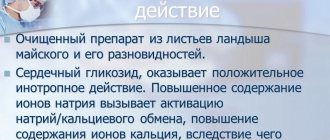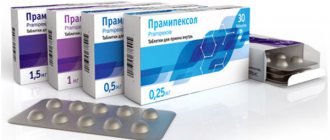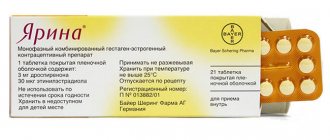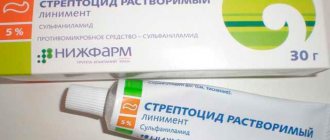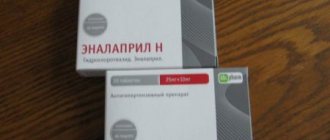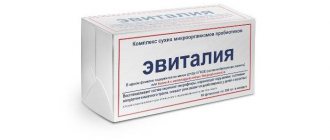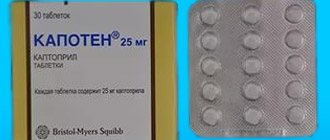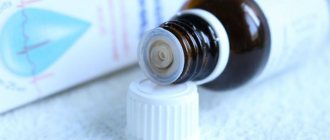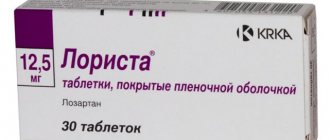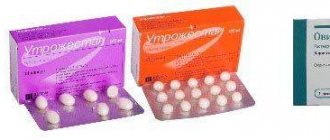Pharmacodynamics and pharmacokinetics
Reduces the flow of calcium into the cell, reduces the level of calcium in the plasmalemma depot, enhances the vasodilatory effect of carbon dioxide, reduces the tone of smooth muscle tissue of arterioles. Cinnarizine has a vasodilating effect and does not affect blood pressure. The antihistamine activity of the drug is moderate, reduces the tone of the sympathetic nervous system, and moderately reduces the excitability of the vestibular apparatus. Cinnarizine is effective in patients with a latent variant of cerebral circulatory , with the initial form of cerebral atherosclerosis, after a stroke . In persons with impaired peripheral circulation, it improves the nutrition of tissues, organs, myocardium, and increases post-ischemic dilation of the lumen of blood vessels. Cinnarizine reduces blood viscosity, moderately increases the ability of red blood cells to deform, and has a positive effect on the elasticity of their membranes.
Maximum absorption occurs within 1-3 hours. It is excreted in the form of metabolites in the urine by one third and in feces by two thirds. The half-life is 4-24 hours.
Conditions for dispensing from pharmacies
Found a mistake? Select it and press Ctrl + Enter
* Instructions for medical use of the drug Cinnarizine are published in free translation. THERE ARE CONTRAINDICATIONS. BEFORE USE, YOU MUST CONSULT WITH A SPECIALIST
Cinnarizine has reliably occupied a pharmacological niche among other drugs that normalize brain function. It is based on a phenyl compound, discovered more than 60 years ago, which makes it possible to prescribe a proven remedy not only to adults, but also to children.
In some particularly severe cases, neurologists prescribe cinnarizine for newborns with a disappointing prognosis. But reviews from mothers found on the Internet are still filled with doubts, since after taking the medicine there is lethargy and drowsiness in children under one year old. And the safety aspect worries everyone who holds a prescription with an unfamiliar drug, especially if pantocalcin is included in tandem with it.
Indications for use of Cinnarizine
What are the pills for? The drug is prescribed after an ischemic stroke , after suffering a brain injury, discirculatory encephalopathy, Minière's disease , vestibular disorders, for the prevention of kinetosis.
What other indications for the use of Cinnarizine exist? The medicine is effective for Raynaud's disease, thromboangiitis obliterans , senile dementia, migraine, sea and air sickness, atherosclerosis obliterans , thrombophlebitis , angiopathy, paresthesia, trophic disorders.
Application for children
Cinnarizine is prescribed to children under 5 years of age if:
- there is insufficient blood supply to the brain;
- it is necessary to mitigate the consequences of traumatic brain injury (TBI);
- reduce hyperactivity and sympathicotonia (aggression, disobedience, lack of attention).
Cinnarizine is prescribed to infants to normalize blood circulation in the brain, as well as in some other cases:
- with increased muscle tone;
- with chills in a cold room/“softening” in a warm room;
- with eye rolling (Graefe syndrome)
- with poorly developing independent walking skills, and so on.
This drug can be taken by children only as prescribed by the attending physician.
Side effects
Nervous system: increased fatigue, drowsiness, extrapyramidal disorders , depression, hyperkinesia, limb tremors, headaches.
Side effects from the digestive system: cholestatic jaundice , dyspeptic disorders, transient epigastric pain, dry mouth.
Rarely, increased sweating, allergies, drop in blood pressure, lichen planus , and obesity are observed.
Contraindications and side effects
"Cinnarizine" is prescribed to children in the minimum dosage, taking into account age and diagnosis. This drug belongs to medications that have a long list of contraindications and adverse reactions from internal organs. Among them are standard:
- allergy;
- sensitivity to the components of the drug.
If Cinnarizine is prescribed together with other medications, they may enhance or weaken the effect of the first one. Thus, simultaneous use with sedatives doubles the sedative effect.
Tablets can cause irritation of the stomach walls if taken for a long time. Therefore, the medicine should be taken after meals. For infants, the tablet is crushed. From the very beginning of taking Cinnarizine, the child feels drowsy, tired and weak. Over time, the symptoms go away. If liver and kidney diseases occur, the dosage is determined individually. Therapy with this medicine is strictly prohibited for children with glucose intolerance and lactose deficiency.
Cinnarizine tablets, instructions for use (Method and dosage)
The drug is taken orally. There is no injection medicine.
If the blood supply to the brain is impaired: 25-50 milligrams three times a day.
If peripheral blood supply is impaired: 50-75 mg three times a day.
Prevention of sea and airborne illness: 30 minutes before the event, take 25 milligrams.
Labyrinthine disorders: 25 milligrams three times a day.
For children over 12 years of age, the dosage is halved. Age less than 12 years is a contraindication to using the drug.
The effect is achieved with continuous treatment.
Do not take more than 225 mg of medication per day.
Instructions for use of Cinnarizine Sopharma 25 mg are similar.
Expert opinion
The popular doctor Oleg Evgenievich Komarovsky is confident in the correctness of discontinuing the drug for widespread use. Over the past few decades, cinnarizine has served as a prophylactic agent for peripheral circulatory disorders. However, side effects have led to the drug being no longer recommended for either the treatment of nootropic disorders or vasodilation.
Therapy for motion sickness (“sea sickness”), dizziness and migraine is justified, but for children over 12 years of age and adults. A well-known pediatrician complains that modern children are often diagnosed with increased intracranial pressure (ICP) and treated with cinnarizine. It is useful for parents to know that with such a diagnosis the child is 100% disabled, since ICP is a symptom of rare and dangerous diseases:
- meningitis
- traumatic brain or birth injury
- hydrocephalus
The latter is accompanied by:
- dehiscence of the sutures of the skull
- protrusion of the fontanel
- large head circumference compared to the norm
In any other cases, neither cinnarizine nor pantocalcin are used. Fluctuations in ICP do occur when a child cries for a long time or strains due to constipation, but after the end of the strain everything returns to normal. It is possible to measure ICP in order to diagnose its increase only with the help of punctures. But few children have undergone such a procedure, offering simpler methods that are not able to measure anything.
Therefore, if the baby is healthy, shows interest in the world around him, and moves, there can be no talk of any increased ICP. And you should not put your baby at risk by taking pills unless serious examinations have been carried out using punctures of the brain or cerebrospinal fluid. Neurologists too often speculate on a convenient diagnosis so that the mother does not sit with her hands folded. In most cases, it is enough to be patient, unless we are talking about a truly dangerous disease.
special instructions
Cinnarizine may cause false positive doping tests in athletes. This effect is explained by the antihistamine effect of the drug. Long-term use requires monitoring the functioning of the liver, kidneys, and blood condition. It is acceptable to take the drug while breastfeeding. Affects transport management.
A combination of Cinnarizine and Piracetam for chronic cerebrovascular insufficiency. The interaction of these substances is described in detail on Wikipedia.
Analogues, prices and storage conditions
A complete analogue in composition and pharmacological action is the drug Stugeron. This is the same cinnarizine, only under a different trade name. An interesting point is that the contraindications for age indicate not 12, but 5 years.
Cinnarizine in combination with Piracetam is the drug fezam. It is also prescribed to children from 5 years of age when there is an indication of brain injury, sleep disorders, neuroses, and speech development disorders.
Phenibut is an analogue not in composition, but in similarity of action. A typical nootropic based on gamma-hydroxybutyric acid. Prescribed by pediatricians for young children with asthenia, enuresis, nervous tics, insomnia, motion sickness, despite age restrictions from 8 years.
Storage conditions are normal - dry place, room temperature. Keep away from children. Shelf life is indicated on the packaging.
Cinnarizine analogs
Level 4 ATX code matches: Betagis
Stugeron
Betaserk
Betaver
Westinorm
Westicap
Betagistine
Tagista
Vestibo
Analogs of the drug are: Stugeron , Cynarizin .
Cinnarizine price, where to buy
The price of Cinnarizine tablets is 30 rubles for 50 pieces.
- Online pharmacies in RussiaRussia
- Online pharmacies in UkraineUkraine
- Online pharmacies in KazakhstanKazakhstan
ZdravCity
- NooCam Piracetam 0.4 Cinnarizine 0.025 capsules 60 pcs. Kamelia NPP LLC
193 rub. order - Cinnarizine tablets 25 mg 50 pcs. Pharma AD
51 RUR order
- Cinnarizine tablets 25 mg 50 pcs. OzonOzon LLC
56 RUR order
- Cinnarizine Avexima tablets 25 mg 50 pcs. LLC Avexima Siberia
66 RUR order
- Cinnarizine tablets 25 mg 50 pcs. Sopharma AD
95 rub. order
Pharmacy Dialogue
- Cinnarizine (tab. No. 56)Update of PFC CJSC
71 RUR order
- Cinnarizine (tab. No. 50)Sopharma
74 RUR order
- Cinnarizine (tab. No. 50)Pharma AD
61 rub. order
show more
Pharmacy24
- Cinnarizine 25 mg N50 tablets AT "Lekhim-Kharkiv", Ukraine
13 UAH.order - Cinnarizine-KMP forte 75 mg N20 tablets PAT "Kievmedpreparat", Ukraine
33 UAH order
- Cinnarizine Sopharma 25 mg N50 tablets PAT "Vitamin" Ukraine
19 UAH order
PaniPharmacy
- Cinnarizine tablets Cinnarizine tablets. 25mg No. 50 Ukraine, Lekhim-Kharkov CJSC
12 UAH order
- Cinnarizine forte tablets Cinnarizine forte tablets. 75 mg No. 20 Ukraine, Kievmedpreparat OJSC
39 UAH order
- Cinnarizine tablets Cinnarizine tablets. 25 mg No. 50 Bulgaria, Sopharma
23 UAH order
show more
Release form and composition
Dosage form of Cinnarizine - tablets: round, flat-cylindrical, with a chamfer, with an R marking on one side (or without it); color – from white to white with a creamy tint (10 pcs. in blister packs, 1–5 or 10 packs in a cardboard pack; 10, 20, 30, 40, 50 or 100 pcs. in polymer/orange glass jars, 1 can in a cardboard box).
1 tablet contains:
- active ingredient: cinnarizine – 25 mg;
- auxiliary components: lactose, calcium stearate, povidone, aerosil, potato starch, vaseline oil.
